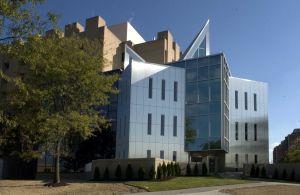How EPA Is Implementing the Guiding Principles for Sustainable Federal Buildings

EPA’s AWBERC Main Building and Annex 2 in Cincinnati, Ohio, meet the Guiding Principles.
The Guiding Principles for Sustainable Federal Buildings (commonly referred to as the Guiding Principles) contain two sets of sustainable building requirements–one for new construction and modernization, and a second for existing buildings. Both sets of Guiding Principles address:
- Integrated design or operation
- Energy performance
- Water conservation
- Indoor environmental quality
- Environmental impact of materials
EPA implements the Guiding Principles for Sustainable New Construction and Modernization in new construction and modernization projects greater than 10,000 gross square feet. To meet the requirements of the Guiding Principles for Sustainable Existing Buildings, EPA developed a comprehensive, multi-step process to convert its existing buildings into high performance sustainable buildings. Prior to October 2008, projects could be grandfathered into meeting this requirement if they achieved LEED certification.
In this multi-step process, EPA evaluates, improves and documents each facility’s operations and environmental performance against the Guiding Principles. As the first step, EPA performs sustainability assessments to gauge its facilities’ potential to meet the Guiding Principles and identifies gaps. The Agency implements green building projects and documents sustainable building management plans to bring buildings into compliance with the Guiding Principles.
EPA facilities around the country that meet the Guiding Principles include:
- Cincinnati, Ohio
- Fort Meade, Maryland: Environmental Science Center
- Gulf Breeze, Florida: Gulf Ecosystem Measurement and Modeling Division Gulf Ecology Division Laboratory Building 67
- Research Triangle Park, North Carolina:
